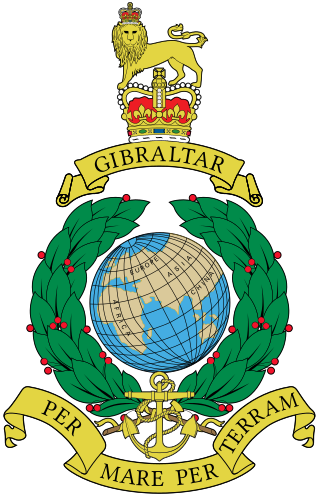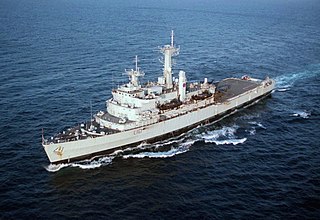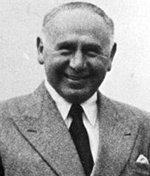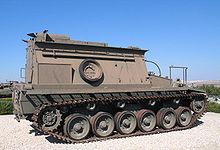
A military engineering vehicle is a vehicle built for construction work or for the transportation of combat engineers on the battlefield. These vehicles may be modified civilian equipment or purpose-built military vehicles. The first appearance of such vehicles coincided with the appearance of the first tanks, these vehicles were modified Mark V tanks for bridging and mine clearance. Modern military engineering vehicles are expected to fulfill numerous roles, as such they undertake numerous forms, examples of roles include; bulldozers, cranes, graders, excavators, dump trucks, breaching vehicles, bridging vehicles, military ferries, amphibious crossing vehicles, and combat engineer section carriers.

The Royal Marines, also known as the Royal Marines Commandos, and officially as the Corps of Royal Marines, are the United Kingdom's amphibious special operations capable commando force, one of the five fighting arms of the Royal Navy, and provide a company strength unit to the Special Forces Support Group (SFSG). The Royal Marines trace their origins back to the formation of the "Duke of York and Albany's maritime regiment of Foot" on 28 October 1664, and the first Royal Marines Commando unit was formed at Deal in Kent on 14 February 1942 and designated 'The Royal Marine Commando'.

The Albion-class landing platform dock is a class of amphibious warfare ship in service with the Royal Navy. The class consists of two vessels, HMS Albion and HMS Bulwark, ordered in 1996 to replace the ageing Fearless class. Both ships were built by BAE Systems Marine at the former Vickers Shipbuilding and Engineering yard in Barrow-in-Furness. Albion was commissioned in 2003 and Bulwark in 2004. Each of the ships has a crew of 325 and can accommodate up to 405 troops. Thirty-one large trucks and thirty-six smaller vehicles and main battle tanks can be carried inside the vehicle deck. To disembark troops and vehicles, the vessels are equipped with eight landing craft.

The Centurion was the primary British Army main battle tank of the post-World War II period. Introduced in 1945, it is widely considered to be one of the most successful post-war tank designs, remaining in production into the 1960s, and seeing combat into the 1980s. The chassis was adapted for several other roles, and these variants have remained in service. It was a very popular tank with good armour, mobility, and a powerful main armament.

HMS Fearless (L10) was a Royal Navy amphibious assault ship that served from 1965 until 2002. One of two Fearless-class landing platform docks, she was based in HMNB Portsmouth and saw service around the world over her 37-year life. She was the last steam-powered surface ship in the Royal Navy.

HMS Intrepid (L11) was one of two Fearless-class amphibious warfare ships of the Royal Navy. A landing platform dock (LPD), she served from 1967 until 1999. Based in HM Naval Base, Devonport, Plymouth, Devon and HM Naval Base Portsmouth, she saw service around the world over her 32-year life.

Landing craft are small and medium seagoing watercraft, such as boats and barges, used to convey a landing force from the sea to the shore during an amphibious assault. The term excludes landing ships, which are larger. Production of landing craft peaked during World War II, with a significant number of different designs produced in large quantities by the United Kingdom and United States.

The Amphibious Vehicle, Tracked (LVT) is an amphibious warfare vehicle and amphibious landing craft, introduced by the United States Navy and United States Marine Corps. The United States Army, Canadian Army and British Army used several LVT models during World War II, and referred to those vehicles as "Landing Vehicle, Tracked."

Hobart's Funnies is the nickname given to a number of specialist armoured fighting vehicles derived from tanks operated during the Second World War by units of the 79th Armoured Division of the British Army or by specialists from the Royal Engineers.

DD or duplex drive tanks, nicknamed "Donald Duck tanks", were a type of amphibious swimming tank developed by the British during the Second World War. The phrase is mostly used for the Duplex Drive variant of the M4 Sherman medium tank, that was used by the Western Allies during and after the Normandy Landings in June 1944.

A Landing Craft Utility (LCU) is a type of boat used by amphibious forces to transport equipment and troops to the shore. They are capable of transporting tracked or wheeled vehicles and troops from amphibious assault ships to beachheads or piers.

An armoured recovery vehicle (ARV) is typically a powerful tank or armoured personnel carrier (APC) chassis modified for use during combat for military vehicle recovery (towing) or repair of battle-damaged, stuck, and/or inoperable armoured fighting vehicles, such as tanks and armoured personnel carriers. Most ARVs have motorized tracks, like a tank or bulldozer, enabling the ARV to operate on uneven ground. The term "Armoured Repair and Recovery Vehicle" (ARRV) is also used.

The United States provided tens of thousands of its Medium Tank M4, also named the Sherman, to many of its Allies during the Second World War, under the terms of Lend-Lease.
The Ontario Regiment (RCAC) Museum is a military museum located in Oshawa, Ontario, Canada. The museum is located on the South Field of the Oshawa Municipal Airport, 1000 Stevenson Rd N, Oshawa, Ontario.

Yad La-Shiryon is Israel's official memorial site for fallen soldiers from the armored corps, as well as one of the most diverse tank museums in the world. The cornerstone for Yad La-Shiryon was laid on December 14, 1982.

Armoured Vehicle Royal Engineers (AVRE), also known as Assault Vehicle Royal Engineers, is the title given to a series of armoured military engineering vehicles operated by the Royal Engineers (RE) for the purpose of protecting engineers during frontline battlefield operations.

Nicholas Peter Sorrel Straussler was an engineer mainly remembered for devising the flotation system used by Allied amphibious DD tanks during World War II. He also designed several armoured cars and tanks, including the 39M Csaba armoured car and the Straussler V-4 amphibious light tank. Born in Hungary, he developed a reputation as an innovative automotive engineer before becoming a British citizen during the interwar period. His work was mainly to do with amphibious, off-road and military vehicles.

An amphibious warfare ship is an amphibious vehicle warship employed to land and support ground forces, such as marines, on enemy territory during an amphibious assault.

The Landing Craft Vehicle Personnel (LCVP) is a versatile amphibious landing craft designed to transport troops or armoured vehicles from ship to shore during amphibious landings. The designation was first used in British service for the LCVP Mk2s introduced with the two Fearless class amphibious transport docks, the role having previously been carried out by the Landing Craft Assault developed during the Second World War. They are manned and operated by 1 Assault Group Royal Marines.

Cavalry Tank Museum is a military museum in Ahmednagar in the state of Maharashtra, India. It was established by the Armored Corps Centre and School in February 1994. It is the only museum of its kind in Asia and houses about 50 exhibits of vintage armored fighting vehicles.

























